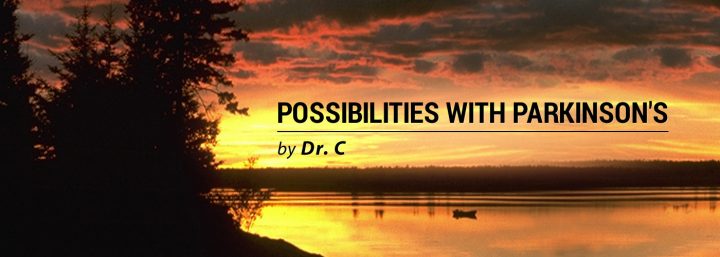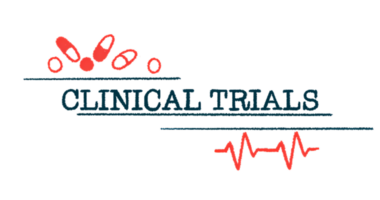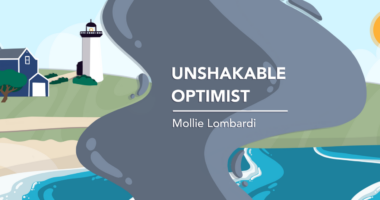Neo Inquires About the Healing Relationship

Neo, the neocortex of Dr. C’s brain mentioned in previous columns, exclaims, “That was amazing, Dr. C, to watch Mrs. Dr. C apply the healing relationship, and poof, you’re all better!” Neo was referring to last week’s column, in which Dr. C emerged from a long period of darkness in his life.
Dr. C grimaces at Neo’s remark. It might sound that simple, but the process is much more involved. “Remember,” he says, “she has been with me for a long time. That is the special knowledge that Mrs. Dr. C has. As James Taylor wrote in his song ‘Something in the Way She Moves,’ ‘She has the power to go where no one else can find me.’ She is a witness to the best of Dr. C.”
“You have mentioned the healing relationship in 10 columns,” Neo points out. “I’ve read all that, but I still don’t understand how it works.”
Dr. C settles into a comfortable position, stretches, and then explains to Neo the development of the concept. Sounding very professorial, he begins, “From the beginning of human civilization, healers, shamans, have been an important part of a sustainable social collective. Healers are often chosen by the tribe because of a gift for sensing the inner person. They often undergo years of training, rites of passage, vision quests, or other training provided by an elder shaman.
“Some of these initiates pass from the ordinary to the extraordinary, and some do not. Those who do learn the intricate dance that is the healing process become skilled artisans within the healing relationship. Only a few will attain such skills.”
During the soliloquy, Mrs. Dr. C opens the door and enters, laden with groceries. Dr. C offers to help, and she asks, “What have you two been up to while I was out?”
Dr. C mentions Neo’s amazement at the healing relationship. “It is his contention that all the stress was eliminated and problems solved with your intervention and use of the healing relationship when I was engulfed in darkness.”
He continues, “The descriptors in the column provide a look at various parts of the healing relationship. This is to help clear the confusion about its nature. But the healing relationship is more than the sum of its parts. There is a holistic experience connected to the phenomenon, one that cannot be known through a process that reduces it to a collection of features or steps in a process. Within this healing relationship is the possibility of experiencing a sacred well-being moment.
“The possibility of sacred well-being is available to everyone, trained or untrained, anytime and anywhere. Training with the healing relationship increases the probability it will occur, but it is not a guarantee. Training also helps with meaning-making during follow-up,” he adds.
Mrs. Dr. C responds, “What the ‘good doctor’ forgets is that his brush with the darkness impacted us both. We both had to go through that dark, briar-filled forest of emotions, despair, and fear.
“I think there are two more important points to make. One, I have never wanted to become a ‘caretaker’ instead of a ‘wife.’ Caretaker implies to me a distancing from the relationship of spouse. Second, I do not view the healing relationship as a cure. It does not change your symptoms of Parkinson’s or vision loss. It does not make them go away or stop the progression. But it provides something else.”
She thinks for a moment, gazes out the window at the birds circling the feeders, and then says, “It gives me strength. It is a frightening thing for me to feel that there might be nothing I can do. I feel like I am helping to heal a wound, much like scar tissue over an injury. The Parkinson’s and vision loss still happened, the pain is still there, and the scars will always be present. Neither of us can change that. Sometimes I remind him that we just need to follow the map provided.”
Dr. C agrees, “It’s not a cure but rather a path to better living with what exists, even if it’s a chronic illness. The map comes with the sacred experience, and if I do not follow it then all I can expect is failure. Using the healing relationship comes down to believing it is possible, and then having a sacred healing experience with a healer followed by learning everything about it.”
Mrs. Dr. C points at the shopping bags. “It would also help if you could put away some groceries.” She gives Dr. C and Neo a friendly wink.
***
Note: Parkinson’s News Today is strictly a news and information website about the disease. It does not provide medical advice, diagnosis or treatment. This content is not intended to be a substitute for professional medical advice, diagnosis, or treatment. Always seek the advice of your physician or another qualified health provider with any questions you may have regarding a medical condition. Never disregard professional medical advice or delay in seeking it because of something you have read on this website. The opinions expressed in this column are not those of Parkinson’s News Today or its parent company, Bionews Services, and are intended to spark discussion about issues pertaining to Parkinson’s disease.







Ralph Muckle
"Something" is a song written by George Harrison.
Dr. C
Hi Ralph ~ Check out "Something in the Way She Moves" by JT on your browser search. That is the song reference in the article. George didn’t try to hide the source of the line, which was really just a starting lyric for a very different song. “There was a James Taylor song called ‘Something In The Way She Moves’ which is the first line of that,” George said around the time of Abbey Road’s release.
“And so then I thought of trying to change the words, but they were the words that came when I first wrote it. So in the end I just left it as that, and just called it ‘Something.'” It certainly didn’t bother Taylor at all.To Taylor, it was barely worth mentioning. “I don’t think he intentionally ripped anything off, and all music is borrowed from other music,” he said. “So, completely, I let it pass. If George either consciously or unconsciously took a line from one of my songs then I find it very flattering.”